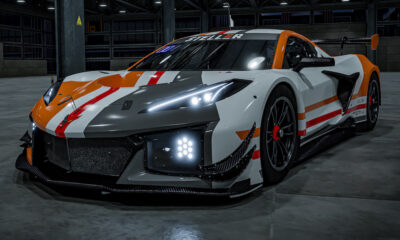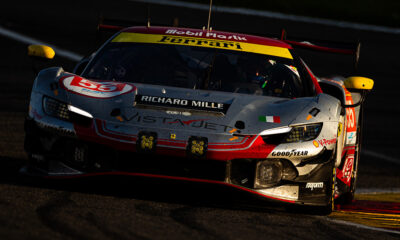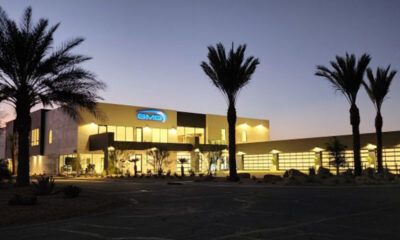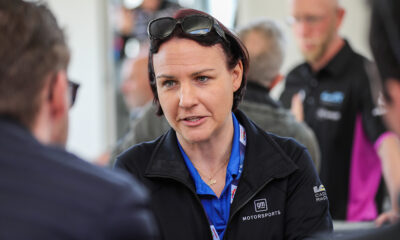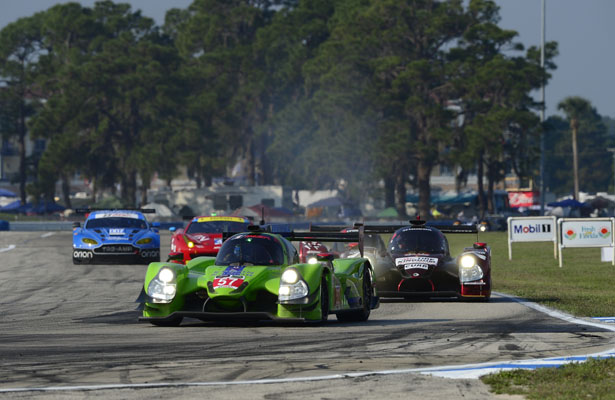
Photo: IMSA
While last weekend’s Mobil 1 Twelve Hours of Sebring saw a Daytona Prototype sweep of the top-five overall positions, change is coming to the TUDOR United SportsCar Championship, with U.S.-based teams and manufacturers eagerly anticipating the release of the 2017 Prototype regulations.
As first revealed by Sportscar365 last month, the ACO and FIA have proposed wholesale changes to the current LMP2 platform, calling for limited chassis constructor involvement as well as a spec engine for all ACO-sanctioned series, the latter having been confirmed late last week.
Despite the current dominance in numbers of aging DP machinery, the majority of TUDOR Championship teams are in support of adopting a version of the yet-to-be-finalized LMP2 regulations, including recent DP convert, Michael Shank.
“I think the most important thing is that we advance [beyond the DPs],” Shank told Sportscar365. “The DP is what brought us here [as a team]. I love it and I think it served a great purpose for a lot of people.
“Having been on both sides now, I think for the long-term of it, I think we need that type of [P2] car.”
The shape of the regulations, however, remains unclear. While the ACO will go in a direction of a single engine supplier for the FIA WEC, ELMS and Asian LMS, it’s understood the TUDOR Championship will remain an open playground for OEMs.
Additionally, discussions have continued on the adoption of manufacturer-specific body kits, which would be fitted on one, or more of the proposed four different approved chassis.
Not all manufacturers are on board with the proposal, though, particularly those who have recently rolled out new LMP2 coupes, such as Honda Performance Development with its ARX-04b.
“It’s challenging for us but we’re still participating in the discussions in hopes of influencing it in a direction that will make it possible for us to continue,” HPD Vice President and Chief Operating Officer Steve Eriksen told Sportscar365.
“Like other manufacturers who made P2 coupes, we signed up expecting this was a six-year program and three years through there would be a ‘minor adjustment’ and that doesn’t look like that’s the way it’s panning out.
“I think for all of the manufacturers to have to re-tool for a brand-new car is a pretty tall order. I would much prefer to see us continue the existing P2 car or the existing P2 car with some changes such as bodywork for recognition of certain styling elements.”
The challenge HPD and all manufacturers, for that matter, are likely to face is securing one of the proposed four chassis constructor licenses for 2017.
Details on the tender process is expected to be revealed to manufacturers in a meeting at Paul Ricard this week, with at least one slot reserved for a North American manufacturer, something Eriksen said they will pursue.
“We’ll definitely throw our hat into the ring and see where it all pans out in the end,” he said. “But a lot can happen now between now and 2017. That’s the key.”
Should HPD become an approved chassis vendor, they would not be able to bid for the spec engine, although it would theoretically not limit them of becoming an engine manufacturer in the TUDOR Championship.
“We’re a North American-based company so we favor the American series,” Eriksen said. “Having the opportunity to run our engine and our chassis in the U.S. would certainly be a positive.
“But I wouldn’t want to be in a position where I would be running someone else’s engine and re-badging it. That just doesn’t make sense for an engine company.”
According to veteran team owner Wayne Taylor, his biggest worry is whether the new regulations would bring enough OEM involvement to the class, particularly as the engine and body kit platform would be restricted to only one series.
“The biggest issue that’s at stake for our series in prototypes is that the car manufacturers are going to need to know that the rules are going to be at a point where they can compete,” Taylor told Sportscar365.
“Why would a car manufacturer make an investment and go racing against nobody? To me, the biggest problem I’m worried about is that. Because if there’s no [manufacturer] competition, then I don’t know.”
Prototype Challenge teams, such as the Rolex 24 and Sebring-winning PR1/Mathiasen Motorsports squad, are also keeping a keen eye on the developments, as it will likely have an impact on the future of its class as well.
“I really think that a decision being made on the future of the P category and PC, of what that equipment looks like, will reinvigorate all of the prototype classes,” team owner Bobby Oergel told Sportscar365.
“My opinion is that we should make the P car and PC car identical [in the regulations]. The only difference [between the classes] would be drivers. I get it that it may need to have spec engines and spec dampers. But whatever that is, make it legal for the P class.
“If a guy wants to pony up and run Daytona as a P car and go for it, great. But you have the potential to win overall and that’s where you’ll bring all of the amateurs back.”
Taylor and Shank are both hoping for the manufacturer pool to grow, potentially back to the numbers of GRAND-AM’s heyday in the DP era, which delivered competitive racing with a variety of machinery.
“If the P2 goes in a similar direction to the ACO and FIA [proposals], that allows different engines over here, I think the first year might be lean, but I think within a year, everybody will be here,” Taylor said.
“I believe it will be the same as when Jim [France] decided to build [the Daytona Prototype]. When we signed on then, there were seven cars. Two years later, there were 31 cars.”
While Taylor said he’s fully committed to the Corvette DP platform through 2016, Shank is happy to have made the switch now as he plans for the future.
“Part of my job, and the reason I think I’ve survived for 22 years, is trying to anticipate,” he said. “I think when more people get a chance to drive [the P2 car], it’s good. The racing could potentially get back to how it was in the strong DP days, which was brutal racing.
“For everyone’s sake: pro drivers, Bronze drivers, drivers who are bringing funding… It’s a better car to drive. And it will make our series better.”



















